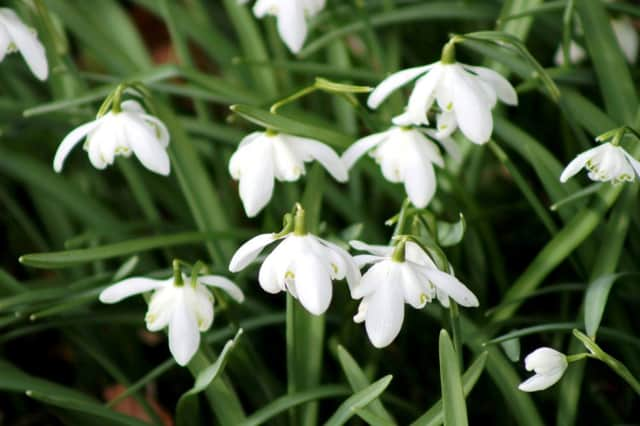Common or garden beauty that won’t end up as booty


So, £750 it is for just one... snowdrop. Yes, all that money for a tiny spring flower, which, like the tulip in the days when the Dutch lost all rhyme and reason, has become something of a collector’s item.
And it seems that some are willing to go to any lengths to get their paws on the rarest variety. Thankfully, the majority of snowdrops in the majority of gardens are not worthy of plant thieves’ attention – they are the common forms. Nevertheless, they still make the winter and early spring a brighter place.
Advertisement
Hide AdAdvertisement
Hide AdAnd whereas tall flowers leave behind the problem of tatty foliage, the snowdrop (Galanthus) becomes inconspicuous after the last flower fades, and is so often tucked away in corners and beneath shrubs and trees that it becomes an instant, distant memory.
Snowdrops like shady spots; under trees, in grass, but they are capable of growing and thriving just about anywhere as long as the soil is fertile and free-draining. There are scores of varieties, many derived from the common snowdrop, Galanthus nivalis, ranging in size from the miniature to the tall-growing forms which, on a good day, and if they are standing to attention, might make six inches.
Like all bulbs, they are self-contained cannibals, feeding on the goodness from their own foliage. So, after flowering, they should be left alone until the leaves have yellowed.
Strange though it may seem, clumps of Galanthus bulbs, lifted and planted immediately after they have finished flowering, will fare far better than the wrinkled, dry bulbs that are offered for sale in autumn. Those sad apologies for a splendid spring flower take time to acclimatise, whereas bulbs planted in March will carry on as though nothing has disturbed their world.
For that reason, many gardeners watch until the final flower has bloomed, then they dash out, lift and divide clumps, and replant them.